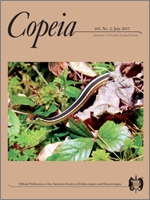Insular Newfoundland has no native amphibians. While global amphibian populations are declining at alarming rates, populations of introduced anurans (frogs and toads) continue to expand in western Newfoundland, Canada. We expected the establishment and dispersal of the most recently introduced species, Mink Frog (Lithobates septentrionalis), to be influenced by the presence in the region of the previously introduced and ecologically similar Green Frog (L. clamitans). We used a combination of anuran calling surveys and pond-edge visual surveys to assess the ongoing dispersal, relative regional distribution, and local habitat use for these two species in western Newfoundland. The recently established Mink Frog has dispersed ∼3.8 km/year northeast from the original (2001) discovery location and ∼2.6 km/year southwest; co-occurrence analyses revealed that this population displayed habitat and spatial separation from long-established Green Frog populations, at both landscape and local scales. Although cause and effect is not established, this response appears to be defined, at least in part, by the influence of pH on species occurrence; Mink Frogs may be avoiding acidic environments which are tolerated by Green Frogs.
How to translate text using browser tools
12 July 2017
Initial Dispersal and Breeding Habitat Use of Newly Introduced Mink Frogs in Western Newfoundland, Canada
Dion O. Kelly,
Robert J. Scott,
Christine E. Campbell,
Ian G. Warkentin
ACCESS THE FULL ARTICLE





